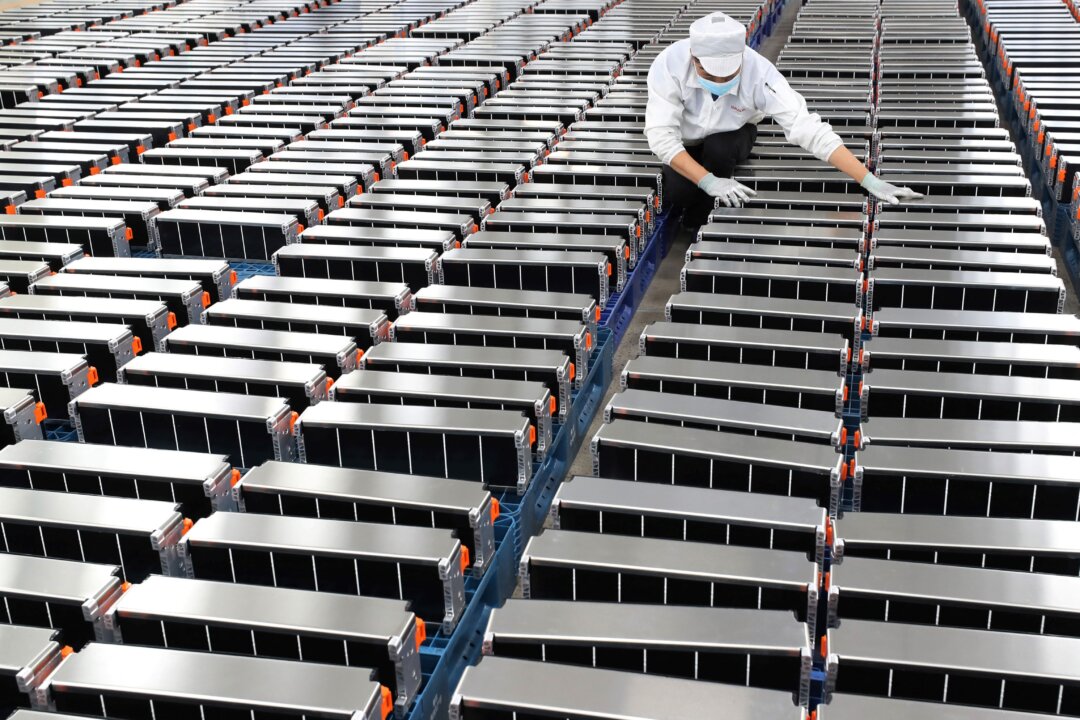Experts say the new batteries, which use sodium instead of lithium, can help minimize dependence on China.
Scientists have created the world’s first anode-free sodium solid-state battery that they say is cheaper than the dominant lithium batteries.
The new breakthrough was made by researchers from the Laboratory for Energy Storage and Conversion (LESC) at the University of Chicago. Traditional batteries have an anode that stores charged atomic particles called ions. When the battery is turned on, ions flow from the anode to the cathode, or the current collector, to power devices.
However, LESC’s new battery does not use an anode. Instead, the ions are stored in an “electrochemical deposition of alkali metal” directly on the cathode.
“This approach enables higher cell voltage, lower cell cost, and increased energy density,” reads a July 3 press release.
In addition, most batteries tend to be lithium-ion. However, lithium is a scarce element. The new battery tackles the issue by using “inexpensive, abundant sodium instead of lithium,” LESC states.
“This new form of battery will be more affordable and environmentally friendly to produce. Through its innovative solid-state design, the battery also will be safe and powerful,” according to the release. The battery can stably run for several hundred cycles.
Sodium is much more prevalent that lithium and far cheaper, giving it a considerable advantage over lithium when it comes to battery production.
Lithium deposits are more concentrated, with Chile, Bolivia, and Argentina combined holding more than 75 percent of global supply. In contrast, sodium can more easily be found in ocean water and by mining soda ash, according to the press release.
Sodium does have a few disadvantages. It has a lower energy density than lithium, according to a post by Blackridge Research and Consulting. Hence, sodium-ion batteries cannot output as large a charge as their lithium counterparts.
And sodium is three times heavier than lithium, which would likely result in bulkier batteries, Blackridge said.
Lithium batteries come with a higher risk of thermal runaway and catching fire. In comparison, sodium batteries are much less prone to these risks and thus are more “fire safe,” it said.
A paper detailing the LESC research was published in the Nature Energy journal on July 3.
“Although there have been previous sodium, solid-state, and anode-free batteries, no one has been able to successfully combine these three ideas until now,” said Grayson Deysher, the study’s first author.According to a December 2023 post by research service ING, shifting to sodium-ion batteries would help counter the Chinese advantage in the battery sector.
“While China accounted for only about 15 percent of global lithium raw material supply in 2022, approximately 60 percent of battery metal refining into specialist battery chemicals happens in China,” ING said. “China produces three-quarters of all lithium-ion batteries.
“Sodium is one of the most abundant and geographically spread resources on Earth. … It is cheaper and more abundant than lithium, making it less susceptible to resource availability issues and to price volatility.”
Chinese dominance poses risks if other countries were to push toward electrification and Beijing decides to restrict supply, stated the research group.
ING noted that China also currently dominates the sodium-ion batteries sector. However, the cheaper cost and abundance of sodium mean that newer supply chains can be built worldwide.
In November 2023, the U.S. Department of Energy announced that it intends invest up to $3.5 billion in companies to boost American production of advanced batteries.
The investment would go toward expanding domestic facilities processing battery-grade minerals, battery components, and those manufacturing cell packs. The investment also focuses on next-generation technologies in addition to lithium, the department stated.

